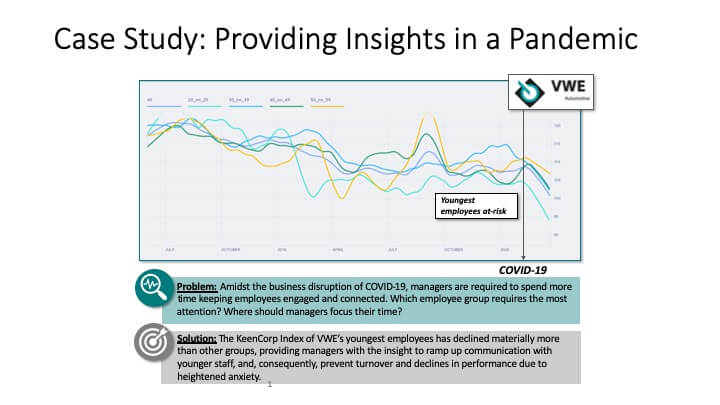Discover how to enhance decision-making in your organization by focusing on three crucial areas: solving the right problem, gathering all the available information, and understanding the intent. Learn to empower your team, foster a purpose-driven culture, and improve organizational clarity for better decision-making.

You need to take an extended vacation. No, seriously, you do.
Not only do you need a vacation, but it needs to be at least two weeks, and preferably longer. I have given many CEOs and business leaders this advice over the years, and I believe in it.
Why a minimum of two weeks? Well, you need the first week to unwind and let work “go.” The second week, you truly relax, the tension of work and all its issues leave, but the brain continues to work in the background. After two weeks, I start to see the forest for the trees. The problems that were prominent in my life no longer are as relevant as I thought they were. Turning to my navigate sage power, I turn to my elder self to look back and see what is essential and what I should be focused on rather than that what has my attention.
Now I am unwinding
However, like the old saying, “Physician heal thyself,” I have failed to heed my advice until two weeks ago. I am now sitting in NE Spain, enjoying a quieter time and relaxing with good friends, food, and wine. To ensure my disconnection, I have adopted the following rules:
- Limit email activity to 15 minutes a day.
- Disconnect from Facebook (well, I effectively did that a couple of years ago) and all social media other than LinkedIn.
- Post to LinkedIn, but according to a plan, it takes about 5 minutes a day.
- Avoid the news and television.
- Reading lots but no business books.
- At least 30 minutes of meditation a day.
- Walk at least 5 miles a day.
- Swim as often as possible in the ocean.
These rules are not complicated, but we are so conditioned to remain connected and tuned in that it takes effort to disconnect.
As I relax, I remember that I, like my clients, need to take an extended vacation to recover from the low-level stress of COVID over the last eighteen months. COVID has taken a toll on me, and more than I realized. While I have been active during COVID, I recognized that I have been reactive more than proactive. Now, not only do I want to change this behavior, but I am framing it around what I want to accomplish in Q4 2021 and 2022.
The benefits for you
Sitting in quiet squares or overlooking the ocean, the focus has gotten more precise, the planning more effortless, and many things are just getting crossed off the list or deleted. Also, I am finding that I can better help my clients as my mind declutters.
I am focusing on achieving my long-term goals and not get distracted by what is in front of me. By refocusing, I realized much of what I was doing was not relevant to the long-term goals and thus a distraction.
Now, I can’t say that everything will be done and perfect at the end of this. But I will have more energy, be much better mentally to deal with what lies ahead, and cope with winter.
The benefit for your business.
Taking a minimum of two weeks off provides additional benefits too. You can see how your business operates without you. You will have answers to the following questions:
- Does my leadership team function well in my absence? Are they aligned, and Is there conflict?
- Do my team and company understand its mission, strategy, and purpose?
- Does the organization continue to hit its KPIs for the quarter?
- Do my clients need to deal with me, or can my team handle the clients’ needs?
I have asked many clients how their business would perform if they were unavailable for three to six months, and the answer is usually “Fine.” However, if you cannot go away for two weeks and disconnect, is that true?
If your business cannot operate without you, you don’t have a business; you have a job! To successfully leave your business, you have to make yourself redundant. Only by creating your own redundancy can you sell it, pass it on, or assume a non-executive position. I realize for many business owners, this isn’t easy, as their identity is tied up in their business, but to create a more significant legacy, ensure it operates without you.
So when did you last leave?
As I said earlier, with COVID, I hadn’t taken a vacation in 18+ months. Not only that, but with WFH, I had, like many others, increased the amount of time I was working which typically included at least one full day of every weekend. All of this took a toll.
So when did you last take a “proper” vacation for at least two weeks? Did you disconnect, or were you on calls and emails all the time, putting out fires and saving the company? The stress of the last eighteen months has taken a mental toll on all of us. If you don’t take a break and let yourself recover, you will be ill-prepared for what is ahead. While none of us know what is ahead, we can be sure that labor, supplies, and demand will be unpredictable.
COVID and its effects are not done. I feel like we’re just finished the first half, but there is another half to go, and the opposing team that emerges from the locker room has a new strategy.
If it has been a while since you took an extended vacation, take one now, you will be amazed at how much you and your business will benefit.
Copyright (c) 2021, Marc A. Borrelli
Recent Posts
Boosting Common Sense Decision-Making in Your Organization
Do You Understand Your Costs to Ensure Profitability?
You can only determine profitability when you know your costs. I’ve discussed before that you should price according to value, not hours. However, you still need to know your costs to understand the minimum pricing and how it is performing. Do you consider each jobs’ profitability when you price new jobs? Do you know what you should be charging to ensure you hit your profit targets? These discussions about a company’s profitability, and what measure drives profit, are critical for your organization.
Sunk Costs Are Just That, Sunk!
If you were starting your business today, what would you do differently? This thought-provoking question is a valuable exercise, especially when it brings up the idea of “sunk costs” and how they limit us. A sunk cost is a payment or investment that has already been made. Since it is unrecoverable no matter what, a sunk cost shouldn’t be factored into any future decisions. However, we’re all familiar with the sunk cost fallacy: behavior driven by a past expenditure that isn’t recoupable, regardless of future actions.
Do You REALLY Know Your Business Model?
Bringing clarity to your organization is a common theme on The Disruption! blog. Defining your business model is a worthwhile exercise for any leadership team. But how do you even begin to bring clarity into your operations? If you’re looking for a place to start, Josh Kaufman’s “Five Parts of Every Business” offers an excellent framework. Kaufman defines five parts of every business model that all flow into the next, breaking it down into Value Creation, Marketing, Sales, Value Delivery, and Finance.
Ideation! Harder Than It Sounds
Bringing in new ideas, thoughts, understanding, and logic is key as your organization faces the challenges of a changing environment. But when you do an ideation session in your organization… how does it go? For so many organizations, many times, after a few ideas have been thrown out and rejected, the thought process slows down very quickly, and a form of hopelessness takes over. How does your organization have better ideation? I’ve come across a new approach with a few teams lately.
Recruit, Recruit, Recruit!
An uptick in business has begun this quarter, and companies are rushing to hire to meet this surge in demand. What amazes me is how many are so unprepared to hire. Continual recruiting is key to the survival of a company. It isn’t the same thing as hiring—continuous recruiting is building a pipeline of people that you would hire if you needed to fill a position, or “A players” you would hire if they were available.
We All Need Clarity
If your organization is focused on obscurity over clarity, whether intentionally or not, your “A” player employees are vulnerable. There is a looming talent crunch. As we start to emerge from COVID, demand is increasing, and many are scrambling to fill positions to meet that demand. Headhunters and recruiters are soon going to be calling your key “A” employees. Have you been giving them a reason to stay?
Not Another **** Meeting
As Leonard Bernstein put it so well, “To achieve great things, two things are needed: a plan and not quite enough time.” Your meetings can be shorter, more fruitful, and engaging, with better outcomes for the organization, employees, and managers. It’s time to examine your meeting rhythms and how you set meeting agendas. This week, I break down daily, weekly, monthly, quarterly, annual, and individual meeting rhythms, with sample agendas for each.
Is Your Company Scalable?
Let’s start here: Why should your company be scalable at all? If your business is scalable, you have business freedom–freedom with time, money, and options. Many business leaders get stuck in the “owner’s trap”, where you need to do everything yourself. Sound familiar? If you want a scalable business that gives you freedom, you need to be intentional about what you sell, and how.
Are you ready for the Talent Crunch?
Companies are gearing up to hire. Unfortunately, many are competing within the same talent pool. Some experts are currently predicting a strong economic recovery starting in May or June. But as the economy booms, there is going to be fierce competition for talent. How will you fare in the looming talent crisis? Your organization should be creating a plan, now, so you can attract the talent you need in the year ahead.












